- Georgia Military College is a public-independent educational institution, comprised of a junior college and a separate preparatory school (grades 6-12), whose mission and purpose is to produce educated citizens by providing junior college students with a liberal arts based two-year undergraduate curriculum, by providing selected college students with ROTC training, and by providing preparatory school students an inclusive college preparatory curriculum that includes a military training component-all in an environment conducive to the holistic development of the intellect and character of its students.
School Highlights
Georgia Military College-Columbus Campus serves 226 students (70% of students are full-time).
The college's student:teacher ratio of 19:1 is higher than the state community college average of 18:1.
Minority enrollment is 87% of the student body (majority Black), which is more than the state average of 61%.
Quick Stats (2025)
- Enrollment: 226 students
- Student:teacher ratio: 19:1
- Minority enrollment: 87%
- Source: Integrated Postsecondary Education Data System (IPEDS)
Top Rankings
Georgia Military College-Columbus Campus ranks among the top 20% of public schools in Georgia for:
Category
Attribute
Diversity
School Overview
The teacher population of 12 teachers has stayed relatively flat over five years.
Georgia Military College-Columbus Campus
(GA) Community College Avg.
Carnegie Classification
Associate of Arts Colleges
Associates--Public Rural-serving Medium
Institution Level
Less than 2 yrs
At least 2 but less than 4 years
Institution Control
Public
Public
Total Faculty
12 staff
209 staff
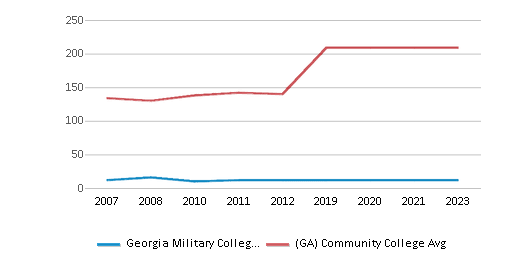
School Calendar
Student Body
The student population of Georgia Military College-Columbus Campus has stayed relatively flat over five years.
The student:teacher ratio of 19:1 has stayed the same over five years.
The Georgia Military College-Columbus Campus diversity score of 0.78 is more than the state average of 0.71. The school's diversity has grown by 15% over five years.
Total Enrollment
226 students
2,242 students
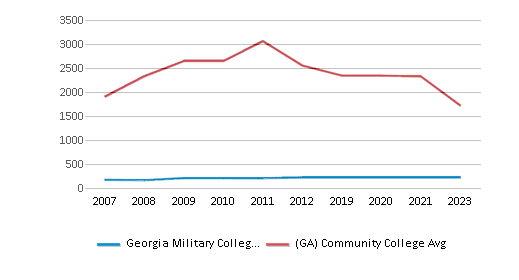
Student : Teacher Ratio
19:1
18:1
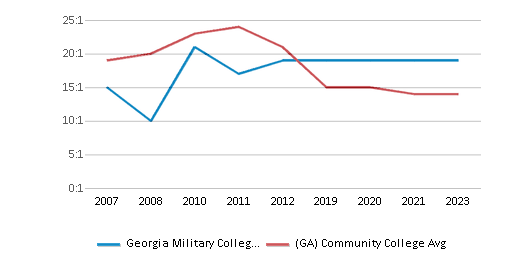
# Full-Time Students
159 students
882 students
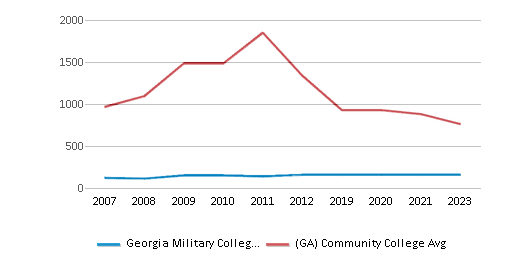
# Part-Time Students
67 students
1,722 students
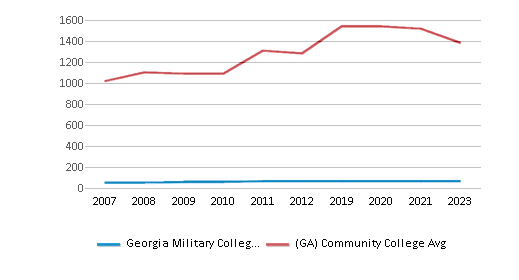
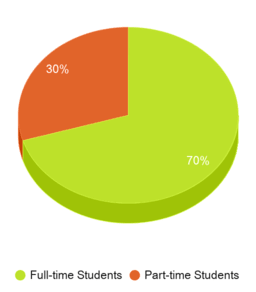
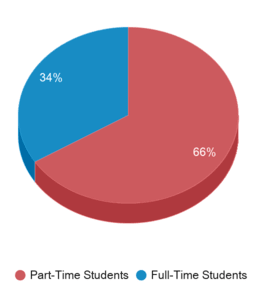
# Enrollment Undergraduate
n/a
299 students
# Full-Time Undergraduate Students
226 students
929 students
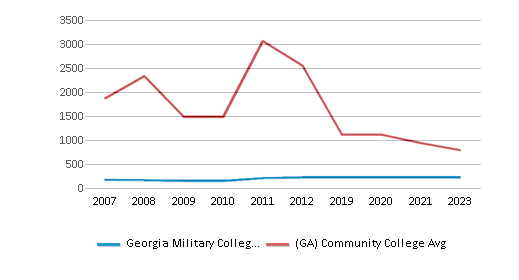
# Full-Time Graduate Students
n/a
87 students
# Part-Time Undergraduate Students
n/a
1,891 students
# Part-Time Graduate Students
n/a
53 students
Total Dormitory Capacity
n/a
654 students
% Asian
3%
4%
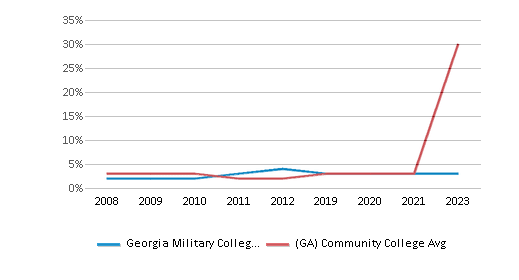
% Hispanic
4%
10%
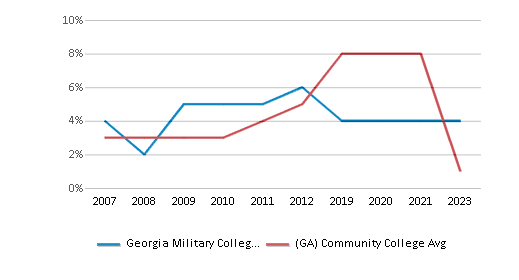
% Black
45%
35%
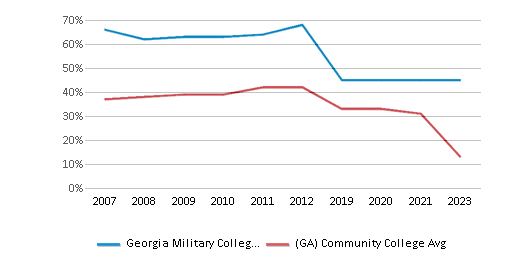
% White
13%
39%
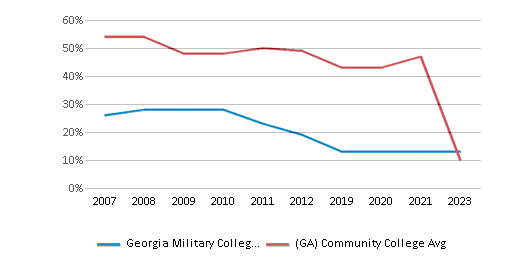
% Hawaiian
n/a
1%
% Two or more races
3%
3%
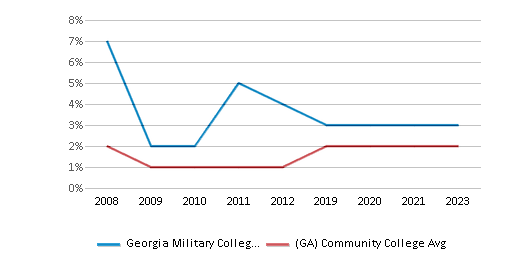
% Non Resident races
n/a
1%
% Unknown races
32%
7%
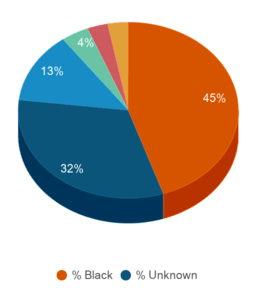
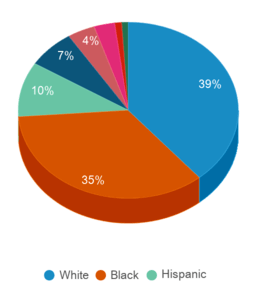
Diversity Score
0.78
0.71

College Completion Rate (Students who graduate in less than 4 years)
12%
31%
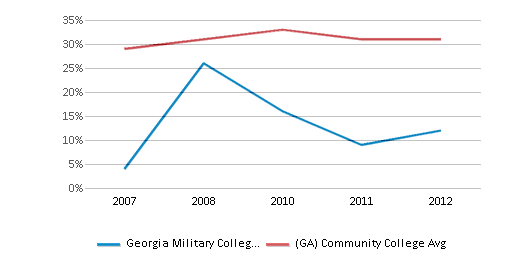
College Completion Rate (Students who graduate in 4 years or more than 4 years)
n/a
0.2368%
Average Graduate Earnings (10 Years)
$35,000
$30,600
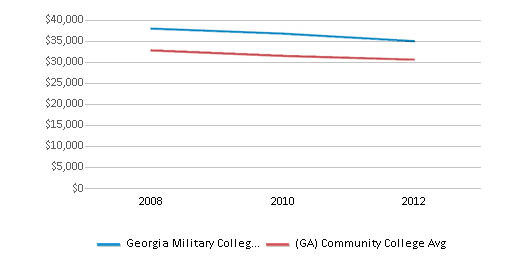
Tuition and Acceptance Rate
% Students Receiving Some Financial Aid
n/a
93%
Median Debt for Graduates
$9,187
$9,187
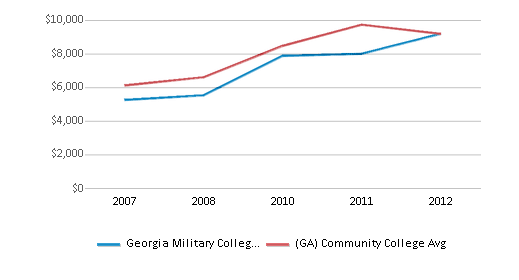
Median Debt for Dropouts
$3,500
$3,667

Acceptance Rate
n/a
75%
SAT Reading
n/a
465
SAT Math
n/a
450
SAT Writing
n/a
465
ACT Composite
n/a
18
ACT English
n/a
18
ACT Math
n/a
18
ACT Writing
n/a
7
Source: 2023 (or latest year available) Integrated Postsecondary Education Data System (IPEDS)
Frequently Asked Questions
What is Georgia Military College-Columbus Campus's ranking?
Georgia Military College-Columbus Campus ranks among the top 20% of community college in Georgia for: Diversity in US community colleges.
Recent Articles

Obtaining Your Bachelor's Degree at a Community College
Explore the evolving landscape of community colleges offering bachelor's degrees, addressing affordability, accessibility, and workforce needs.

A to Z of Community College Certificates and Courses
From business and healthcare to technology and skilled trades, the article showcases the breadth of options available to students seeking to enhance their knowledge, develop new skills, or pursue career advancement.

What is a Community College?
This comprehensive guide explains what a community college is, its history, and its role in higher education. It covers the types of programs offered, differences from four-year colleges, benefits of attending, and important considerations for prospective students, providing valuable insights for those exploring educational options.






